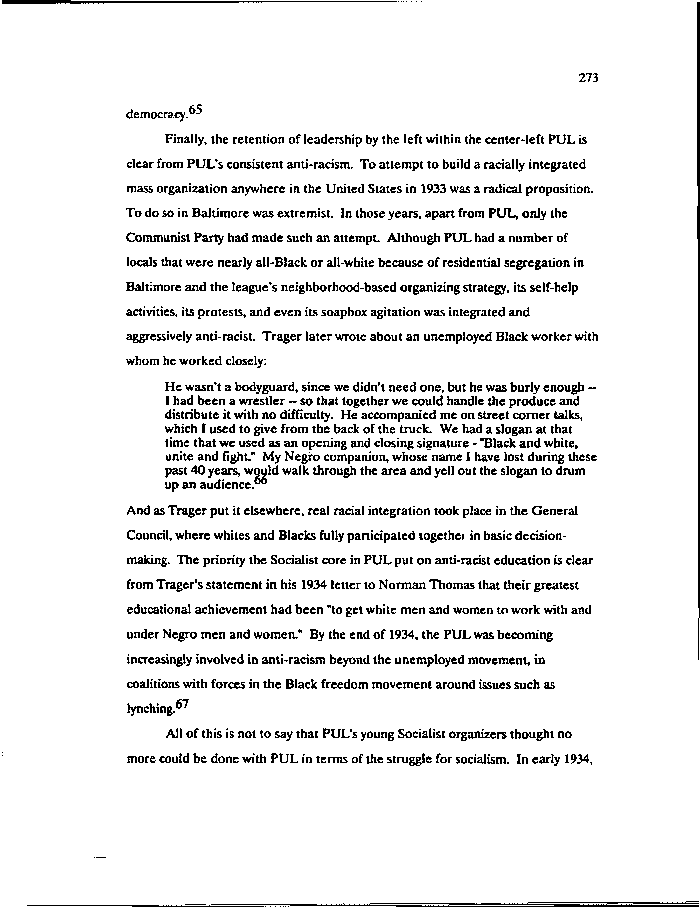|
273
democracy. ^
Finally, the retention of leadership by the left within the center-left PUL is
clear from PUL's consistent anti-racism. To attempt to build a racially integrated
mass organization anywhere in the United States in 1933 was a radical proposition.
To do so in Baltimore was extremist. In those years, apart from PUL, only the
Communist Party had made such an attempt. Although PUL had a number of
locals that were nearly all-Black or all-white because of residential segregation in
Baltimore and the league's neighborhood-based organizing strategy, its self-help
activities, its protests, and even its soapbox agitation was integrated and
aggressively anti-racist. Trager later wrote about an unemployed Black worker with
whom he worked closely:
He wasn't a bodyguard, since we didn't need one, but he was burly enough -
I had been a wrestler — so that together we could handle the produce and
distribute it with no difficulty. He accompanied me on street corner talks,
which I used to give from the back of the truck. We had a slogan at that
time that we used as an opening and closing signature - "Black and white,
unite and fight" My Negro companion, whose name I have lost during these
past 40 years, would walk through the area and yell out the slogan to drum
up an audience.66
And as Trager put it elsewhere, real racial integration took place in the General
Council, where whites and Blacks fully participated togethei in basic decision-
making. The priority the Socialist core in PUL put on anti-racist education is clear
from Trager's statement in his 1934 letter to Norman Thomas that their greatest
educational achievement had been "to get white men and women to work with and
under Negro men and women." By the end of 1934, the PUL was becoming
increasingly involved in anti-racism beyond the unemployed movement, in
coalitions with forces in the Black freedom movement around issues such as
lynching."'
All of this is not to say that PUL's young Socialist organizers thought no
more could be done with PUL in terms of the struggle for socialism. In early 1934,
|

